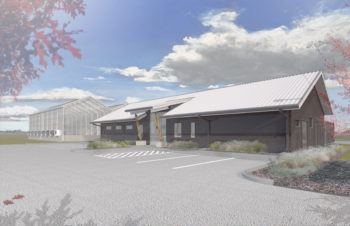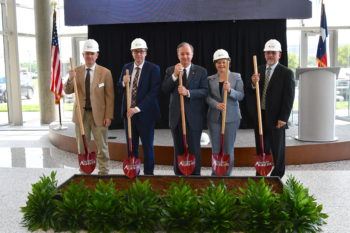Texas A&M AgriLife Unveils Plans For A Robotic Greenhouse Facility
Texas A&M AgriLife unveiled plans May 22 for a multi-million dollar Automated Precision Phenotyping Greenhouse that will utilize advanced sensor technology to enhance agricultural crops in the areas of crop health, yield, nutrition, temperature, drought stress and other environmental conditions.
“Global population growth coupled with consumer demands for more nutritious food calls for new advancements in the agriculture food system and new technologies to keep up with this change,” said Dr. Patrick Stover, vice chancellor of agriculture and life sciences with Texas A&M AgriLife and director of Texas A&M AgriLife Research. “As Texas A&M AgriLife focuses on the importance of revolutionizing our food systems and enhancing the traits of our produce to nourish the world, this greenhouse will be a key component for our crop industry and advance both urban and row agriculture.”
The facility will be located at the intersection of F&B Road and Agronomy Road in College Station, north of the Texas A&M AgriLife Extension Service Soil, Water and Forage Testing Laboratory.
The project, expected for completion by summer 2020, is being led by AgriLife Research and the College of Agriculture and Life Sciences. Both AgriLife Research scientists and faculty will use the facility for experimental trials as well as a teaching platform for undergraduate and graduate students.
The facility is funded by the Chancellor’s Research Initiative Award and matched by the Governor’s University Research Initiative Award. Additional robotic equipment is funded by a Research Development Fund Award. The facility has a construction budget estimated at $3.5 million.
Two 2,400 square foot greenhouses for physicists, biochemists and engineers will work alongside a 3,813-square-foot headhouse with field scientists working in soil, plant, microbe, insect and other disciplines.
The facilities are expected to be completed by June 2020.
The robotic system includes a gantry beam that will transit the entire length of the greenhouse. On the gantry is a rolling truck with a robotic arm capable of long reach to perform a variety of research activities such as plant health and movement. A sensor head will include a multispectral camera and a Raman spectrometer.
In conjunction with advanced genomics and big data collection, the greenhouse technology can identify specific chemical compounds, accelerate crop plant improvement through breeding and genetics, maximizing productivity and stress tolerance.
This will open new opportunities for the study of plant nutritional phenotypes, according to researchers.
“Multiple research institutions have built sophisticated greenhouses with various sensing equipment, but the APP Greenhouses will have the advantage of maximum flexibility in configuration of plants in the greenhouses, in positioning of sensors relative to the plants, and in the types of sensors used,” said Dr. Alex Thomasson, AgriLife Research engineer and professor in the department of biological and agricultural engineering at Texas A&M. “These capabilities will make research in the APP Greenhouses truly unique worldwide, helping position Texas A&M as the leader among peer institutions in this exciting area of discovery.”
The organizations represented among the investigators involved include AgriLife Research, the College of Agriculture and Life Sciences, the College of Science, Texas A&M Engineering Experiment Station, and the College of Engineering. Departments represented include biological and agricultural engineering, soil and crop sciences, plant pathology and microbiology, biochemistry and biophysics, physics and astronomy, mechanical engineering, electrical and computer engineering, and computer science and engineering.
This article by Blair Fannin originally appeared in AgriLife Today.







